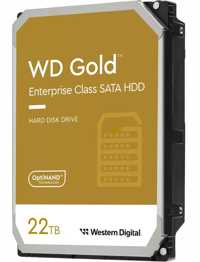Western Digital: Preparing for 30TB and Beyond HDD
With dual actuators
This is a Press Release edited by StorageNewsletter.com on June 16, 2023 at 2:02 pm![]() By Jake Dawe, web content strategist, Western Digital
By Jake Dawe, web content strategist, Western Digital
Every hard drive that Western Digital Corp. creates requires profound complexity. A single drive combines nearly 300 components from hundreds of international suppliers, requires more than one million lines of code to execute countless host communications, and operates with room for error that’s less than 1nm. That’s 1–billionth of a meter.
This complexity is crucial for driving business needs – from delivering reliable, affordable digital storage for the New Space Age to empowering creative teams in the world of hybrid work – all at the largest and most data-hungry organizations.
But as the appetite for data grows, so does the taste for larger, faster, and more efficient digital storage. While flash technology has made SSDs the storage media of choice for hot data that requires fast access, the world’s information needs affordable, high-capacity storage to scale.
To that end, the company recently released the industry’s first 22TB [i] CMR and 26TB SMR hard drives, driving device capacity higher. Now, its engineering teams are pushing further. HDDs like the Ultrastar DC HS760 – which features dual actuator technology – represent another technology that can help cross that 30TB threshold.
Driving future of high-capacity HDDs
Dual actuator technology isn’t new in the storage industry, nor is it the only technology that’s making leaps in HDD capacity possible. Still, it’s one of a handful of engineering techniques that gives us an idea of how we might get there.
For example, with OptiNAND, the company’s proprietary technology that uses embedded flash within HDDs, it’s now possible to write more bits of data onto the same platters. Utilizing energy-assisted perpendicular magnetic recording, or ePMR, engineers can increase the areal density of high-capacity HDDs while controlling for possible signal interference without compromising efficiency and performance.
The triple-stage actuator (TSA) is another innovation from the firm that’s critical to the company’s unceasing capacity gains. An actuator is the mechanism that positions a HDD’s head over the media surface. And what began as single-stage actuators and evolved into dual-stage actuators has advanced once again. Western Digital’s TSA-enabled drives combine field-proven technologies to create 3 independent pivot points. This improved mobility delivers better drive head accuracy, cuts down on ringing and vibration, and reduces seek time needed for R/W operations.
Right now, the storage industry has 2 options: flash storage and HDD storage. Dual actuator technology, plus innovations such as OptiNAND, ePMR, and TSAs, point the way toward another tier of storage that fuses characteristics of flash and HDDs. These innovations allow WD, in collaboration with its customers, to shape what a future with 30TB+ drives looks like – a future for storage providers where the responsiveness of flash is embedded within the larger capacities of HDDs.
Higher capacities call for higher IO/s/TB
However, while the most data-intensive companies are anticipating a future with 30TB HDDs and higher, the challenge for engineers is how to maintain – or even improve IO/s on drives with greater capacities.
According to Ravi Pendekanti, SVP, HDD product management and marketing, now is the right time to release the Ultrastar DC HS760, the company’s 1st HDD to leverage dual actuator technology, to help meet this challenge.
Click to enlarge
“Imagine you’re using one hand to try to find a single pair of socks,” explains Pendekanti. “It might be quick in a small bin, but it gets harder in a 5-gallon laundry basket, or a 25-gallon basket, and so on. As the size of the container gets bigger, things get so much easier when you can use both hands.”
That’s the rationale behind dual actuators.
As OptiNAND boosts HDD capacities and triple-stage actuators more efficiently navigate higher areal density, maintaining performance places more demands on the drive head itself. Introducing a second actuator – thereby splitting platters with the first actuator- means HDDs can execute more IO/s/TB with reduced latency and higher throughput.
Meeting market demand right way, at right time
Pendekanti says the total addressable market (TAM) for dual actuator drives is relatively small at the moment. However, he sees demand increasing as HDD capacity increases in turn.
“It’s like the market for electric vehicles,” he said. “The interest was always apparent, but the infrastructure needed to be there, too. Once companies started building out larger and larger charging networks and proved that customers could drive from California to, say, Texas with charging stations all along the way, then the market changed.”
In Pendekanti’s comparison, the demand for digital storage that can handle larger workloads without compromising IO/s is evident. Enterprise customers know they will need higher-capacity drives to keep up with data demands, but they cannot compromise on performance, especially as storage-intensive use cases take off, such as conversational AI and virtual reality.
But, as organizations scale the data center operations required to support those use cases, they need to know that the digital storage infrastructure is there to meet them along the way. With dual actuator drives like the Ultrastar DC HS760, WD is signaling that, when its customers are ready to tackle even larger data-intensive workloads, its technology will be there to meet them.
[i] 1TB is equal to 1 trillion bytes. Actual user capacity may be less due to operating environment.

















 Subscribe to our free daily newsletter
Subscribe to our free daily newsletter

